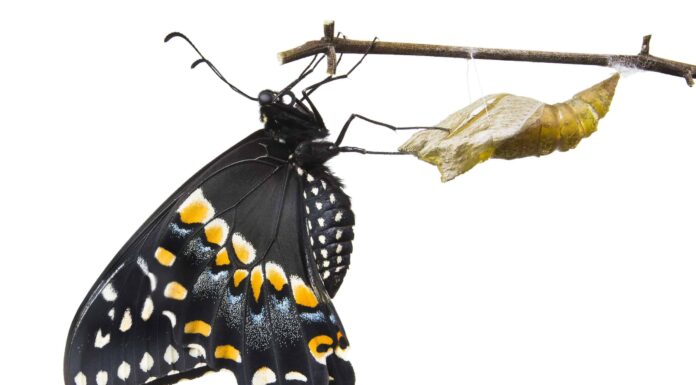The black swallowtail butterfly (Papilio polyxenes) also known as the Eastern black swallowtail is a species of butterfly that can be found in various regions of North America. They have black wings with yellow spots and a wingspan of 2.5 to 3.5 inches. The females also have a blue or blue-green spot on the hindwings. Black swallowtail butterflies feed on a variety of plants, including thistle flowers, milkweed, and clover. They are also known for their strong, fast flight and their distinctive, fluttering flight pattern. Keep reading to learn everything you need to know about black swallowtail butterflies!
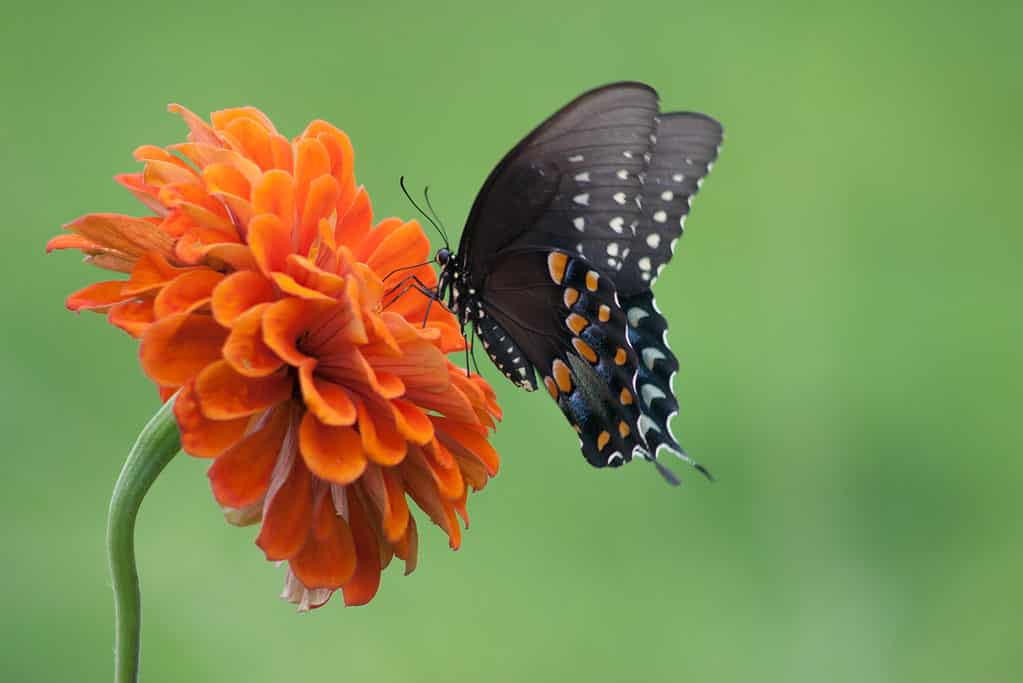
©sclements/Shutterstock.com
Five Fantastic Black Swallowtail Facts
- Black swallowtails have scent glands, osmeterium, that release a repugnant odor when the butterflies feel threatened or sense danger.
- The black swallowtail is the State butterfly of New Jersey and Oklahoma
- The scientific name for the black swallowtail, Papilio polyxenes, is derived from an ancient Greek princess, Polyxena.
- The black swallowtail butterfly has a symbiotic relationship with ants, that will protect the butterfly’s caterpillars from other ants in exchange for a sugary secretion produced by the caterpillars.
- The black swallowtail butterfly is also known to be able to mimic other butterfly species such as the pipevine swallowtail and the spicebush swallowtail.
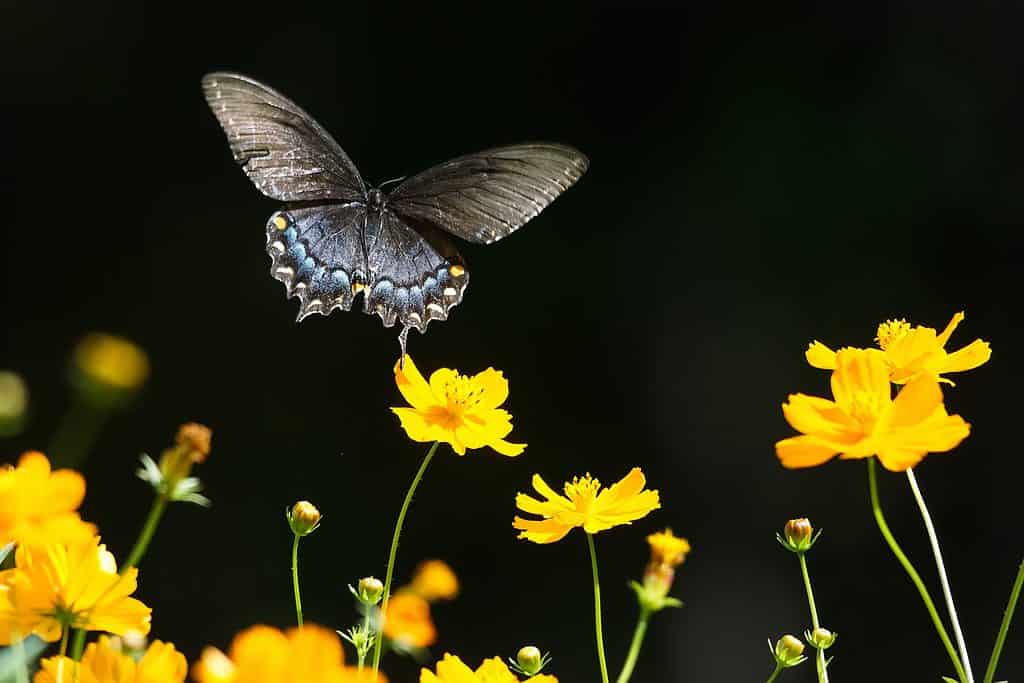
©KathereneS/Shutterstock.com
Black Swallowtail: Scientific Name
Papilio is the Latin word for butterfly. The Greek word poly translates to very, while xena means guest or stranger. The scientific name Papilio polyxenes is derived from the name of the daughter of King Priam, Polyxena. King Priam was the last king of Troy, according to Greek mythology. He had many other children besides Polyxena, including Cassandra, Paris, and Hector, who are also heroes in Greek mythology. Polyxena’s life was cut short. She was sacrificed to appease the ghost of Achilles.
Appearance and Behavior
Appearance
Black swallowtail butterflies, also known as Eastern black swallowtails or parsnip swallowtails, are known for their distinctive black and yellow coloration. The upper side of the wings are black, with yellow spots on the forewings. Females have a row of blue spots on the hindwings. The blue markings are smaller and less evident in males. The underside of the wings is mottled brown and gray with yellow and blue spots. The body is black with yellow spots
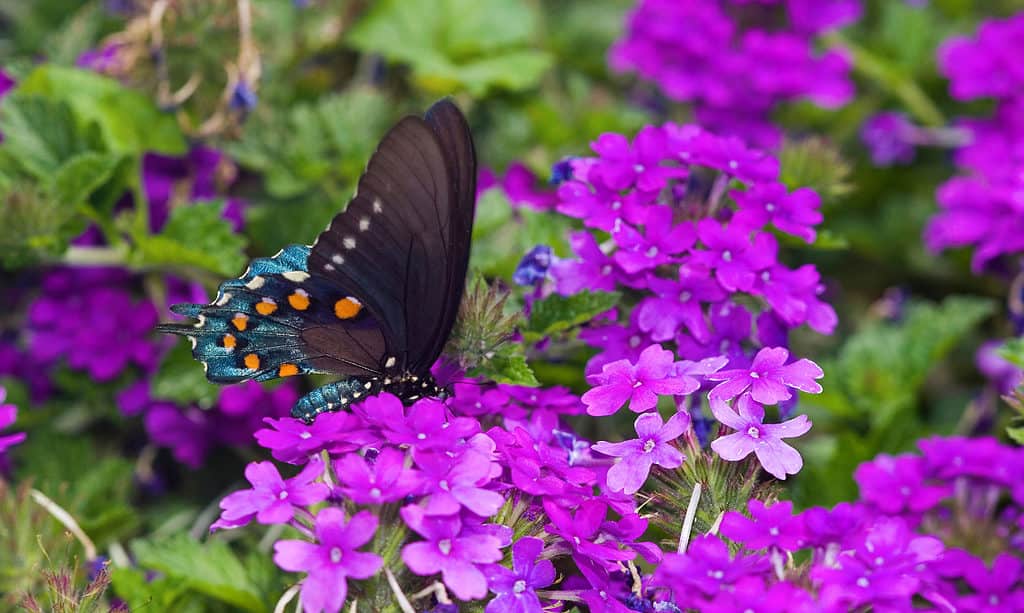
©Danita Delimont/Shutterstock.com
Black swallowtails are found throughout much of the Eastern United States and Canada. They are known for their strong, swift flight. With wingspans of 2.75 to 3.75 inches, they are considered to be large. Female black swallowtails tend to be larger than males. Black swallowtails are most active during the day and can be seen flying around in search of nectar.
Behavior
They are also known to be strong fliers and are able to fly long distances in search of food and mating partners. They are most commonly seen feeding on flowers in open fields and gardens. generally, docile animals. Males can become quite aggressive when defending their territory. Prior to migrating or mating, males will puddle. Puddling involves male swallowtails gathering in bogs or puddles to absorb sodium, which increases neuromuscular activity. The extra sodium gives the butterflies the requisite energy to migrate or mate.
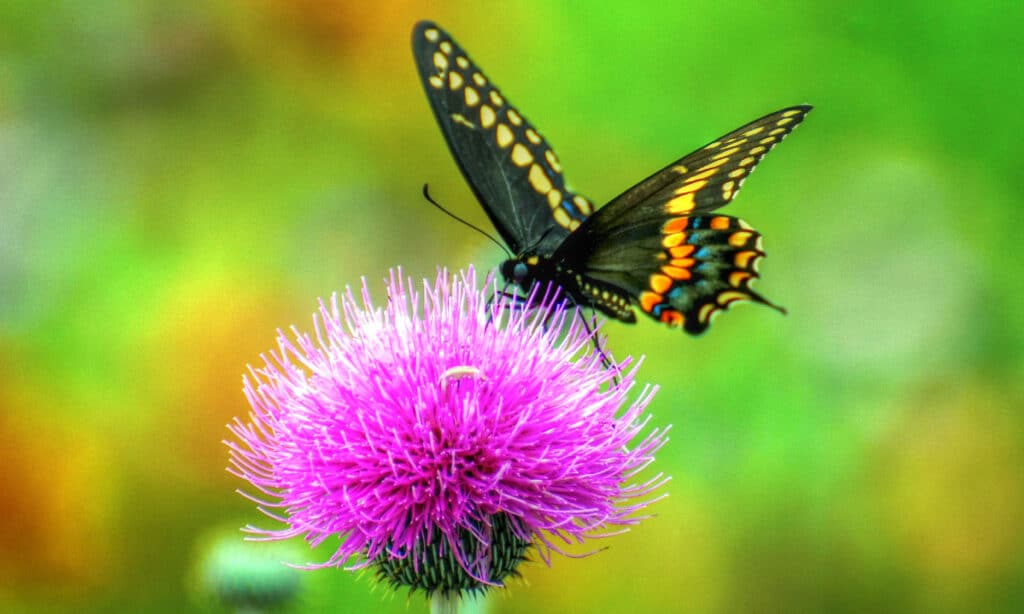
©iStock.com/wayne stockburger
Males also participate in an activity known as hill-topping. In hill-topping, the males will fly to the highest point in their territory in search of a mate. Research suggests that this gives them an excellent vantage point for being seen by potential mates, as well as being able to see potential mates.
Black swallowtail butterflies are equipped with specialized scent glands called osmeterium that secrete a disagreeable odor when the butterfly feels threatened or senses danger. The scent is so repugnant that it deters the would-be predator.
Black Swallowtail: Evolution
The species has a long history and has undergone various changes throughout its evolution. Over time, the black swallowtail has evolved to adapt to different environments and changes in its food sources. For example, the species has developed a chemical defense mechanism, the osmeterium, to deter predators from eating their larvae. Puddling and hill-topping, discussed above, are adapted behaviors that have allowed the species to survive.
Their larval (caterpillar) form has a symbiotic relationship with common black garden ants, in which the common ants will provide a distraction that deters predators, mostly larger and more dangerous ants. Over time the larva has developed a dorsal nectary organ to produce sugars and amino acids off of which the ants feed. The black swallowtail is a resilient species that has adapted to a wide range of environments and changes in its food sources throughout its evolution.
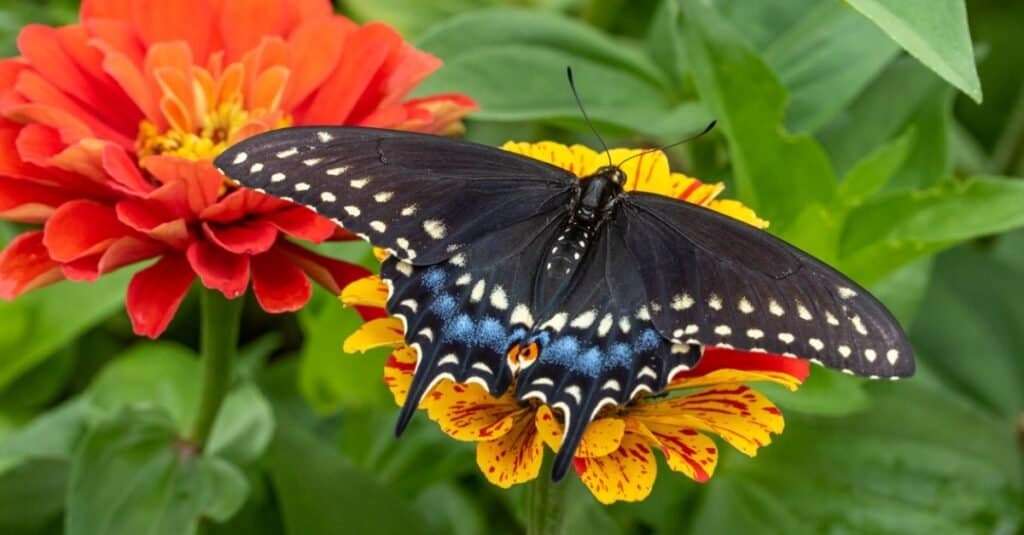
©Melody Mellinger/Shutterstock.com
Habitat
The swallowtail’s range extends from Southern Canada to Northern Mexico. They are commonly found in the eastern United States and Canada, but can also be found as far west as the Great Plains and as far south as Florida and Texas, and Northern Mexico. These beautiful butterflies are found in a variety of habitats including woodlands, meadows, fields, and gardens. They prefer areas with a mix of open spaces and shaded areas and are often found near wetlands or other bodies of water. Females lay their eggs on plants in the Apiaceae family, such as dill, fennel, and parsley.
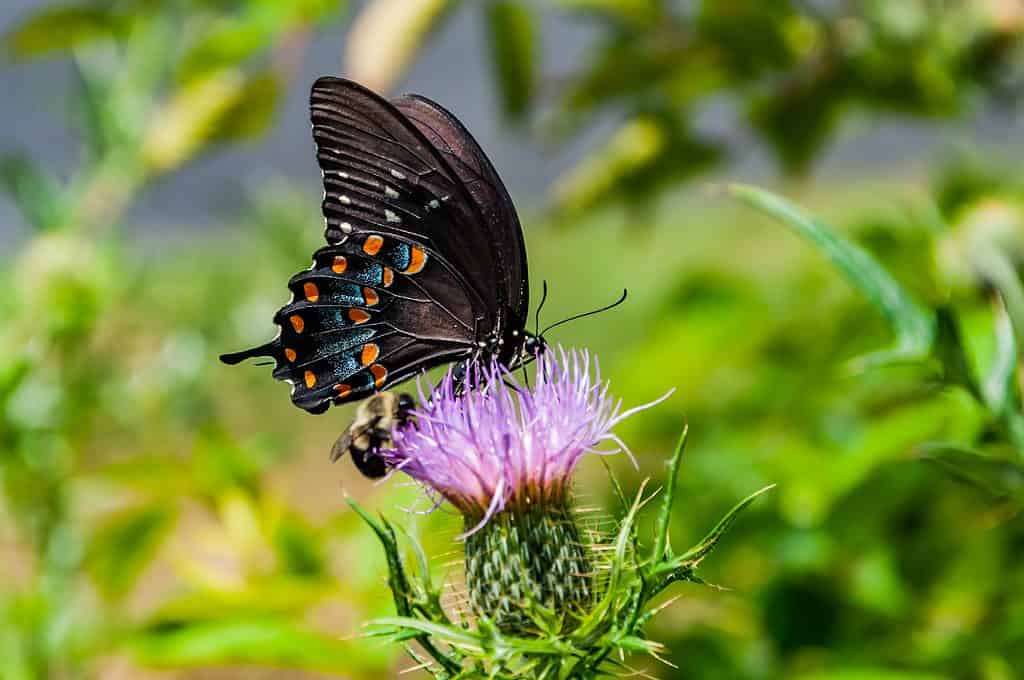
clover, and milkweed, are among black swallowtails’ preferred sources of nectar.
©Walt Bilous/Shutterstock.com
Black Swallowtail: Diet
Black Swallowtail butterflies feed on the nectar from a variety of flowers. They have a preference for flowers with a wide landing platform, such as thistles and Joe Pye weed. Thistle, clover, and milkweed are among their preferred necatar sources. The nectar from the flowers provides the butterfly with the energy it needs to fly and search for a mate or more be tar. The butterfly’s proboscis allows it to reach deep into flowers to extract nectar. a proboscis is a long, slender hollow tongue-like mouth appendage through which the butterfly ingests the nectar.
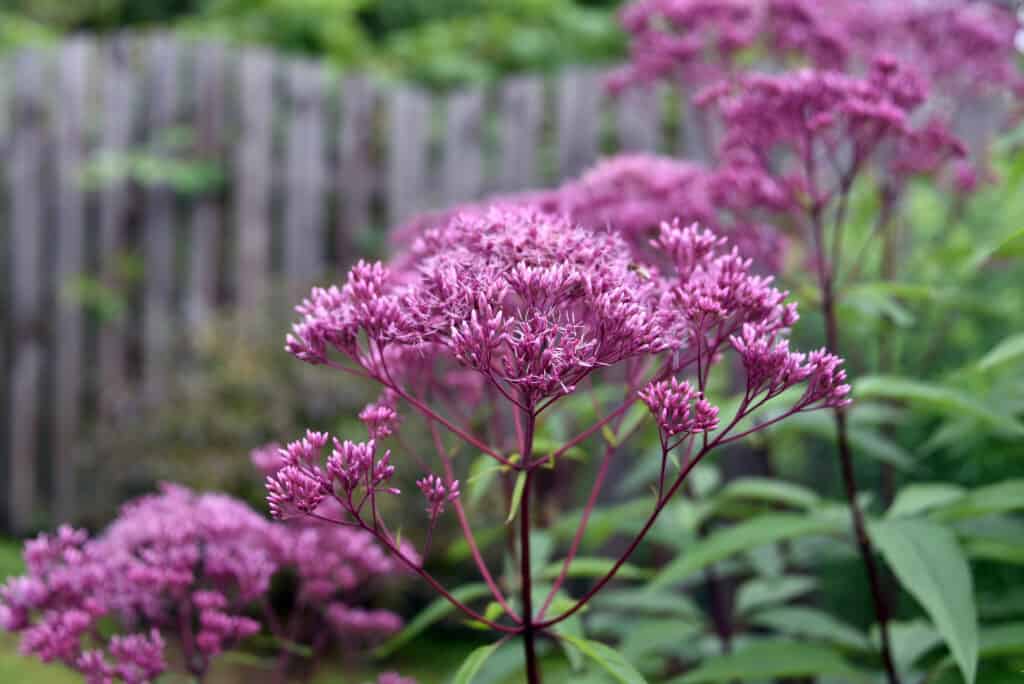
©Andrey_Nikitin/Shutterstock.com
Predators and Threats
Black swallowtails have several predators, including birds, lizards, and spiders. Some common bird predators include the Eastern Bluebird, Baltimore Oriole, and the American Goldfinch. Additionally, their larvae (caterpillars) are also preyed upon by ladybugs, green lacewings, and other beneficial insects. Black swallowtails face a variety of threats, including habitat loss, pesticides, and climate change.
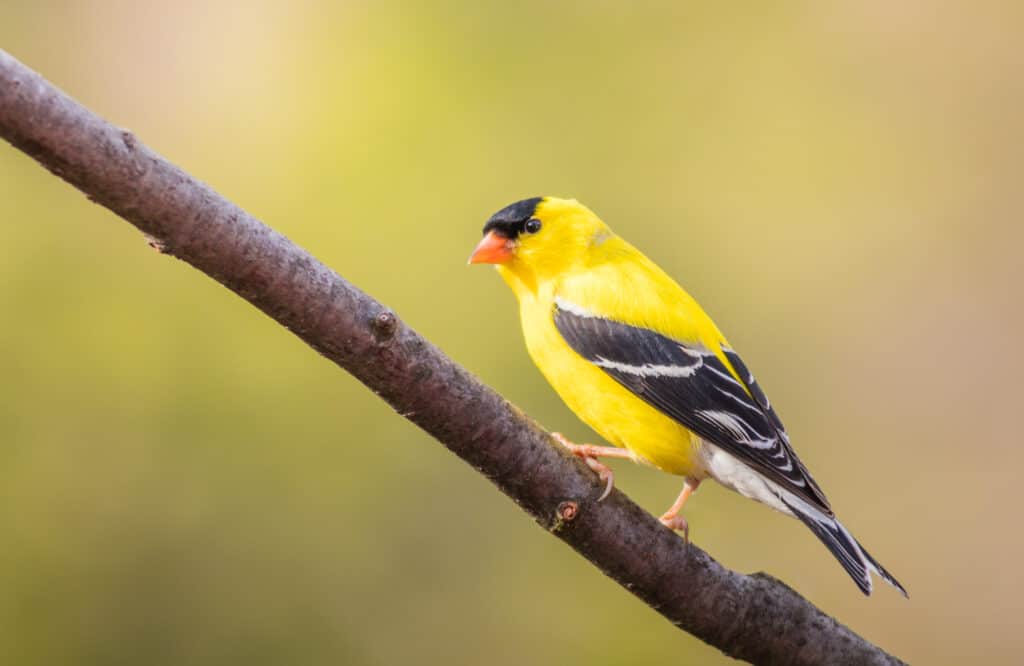
©Rabbitti/Shutterstock.com
Habitat Loss
Habitat loss is a major threat to black swallowtails as it reduces the availability of host plants and nectar sources. Urbanization, agriculture, and development can all lead to the destruction of natural habitats, including meadows, prairies, and wetlands. These habitats are particularly important for the butterflies during their breeding and migration seasons.
Pesticide use can also have a significant impact on black swallowtail populations, as the chemicals can kill both the adults and their larvae. Pesticides also reduce the availability of nectar sources, making it more difficult for adults to find food

©Rich Carey/Shutterstock.com
Climate Change
Climate change may also affect these lovely butterflies as it can alter their migration patterns and breeding cycles. Changes in temperature and precipitation affect the timing of plant growth and blooming, which can make it harder for the butterflies to find the host plants on which to lay their eggs.
Non-Native Plants
The abundance of non-native plant species in gardens and landscaping reduces the availability of host plants which are necessary for their larvae to survive.
For example, the black swallowtail caterpillar feeds on plants from the Apiaceae family, such as dill, fennel, and parsley, and if these plants are not available the caterpillars will have nothing to eat. Additionally, the use of non-native plant species in gardens and landscaping can reduce the availability of their host plants, which are necessary for their larvae to survive.
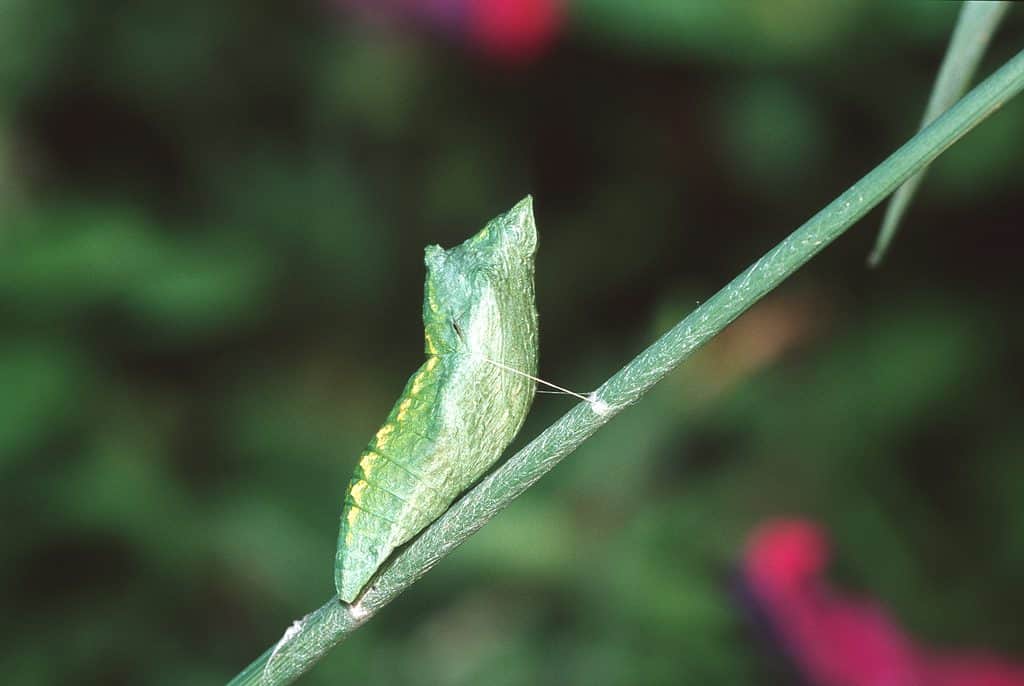
©Danita Delimont/Shutterstock.com
Lifecycle
The lifecycle of a black swallowtail is comprised of four stages: egg, larva (caterpillar), pupa (chrysalis), and adult (butterfly). Females lay their eggs on the leaves of plants in the parsley family, such as dill, fennel, and parsley. The eggs are small, round, and green in color.
After about 4-5 days, the eggs hatch into small black and yellow striped caterpillars. The caterpillars will feed on the leaves of the host plant for 2-3 weeks, growing larger and stronger. During this time the caterpillar will molt, shedding its skin multiple times.
After the caterpillar has completed its growth, it will form a chrysalis by attaching itself to a twig or other solid surface. The chrysalis is green or brown in color and is usually well-camouflaged among the leaves of the host plant. Inside the chrysalis, the pupa undergoes a complete metamorphosis, transforming into a butterfly. After 10-14 days, the metamorphosis is complete, and the butterfly emerges from the chrysalis. The butterfly is black and has distinctive blue, orange, and yellow markings on its wings. The adult butterfly will feed on nectar from flowers and then mate and lay eggs, starting the cycle again. The adult black swallowtail butterfly will live for about 2-3 weeks.
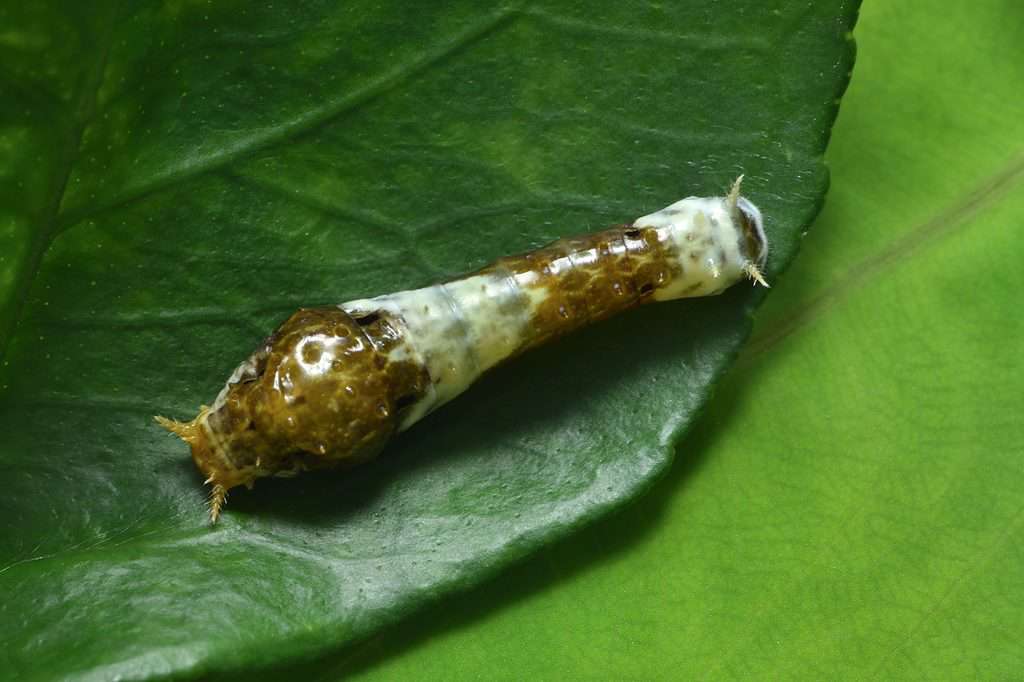
©Chen Liang-Dao/Shutterstock.com
Conservation Status
The black swallowtail…
